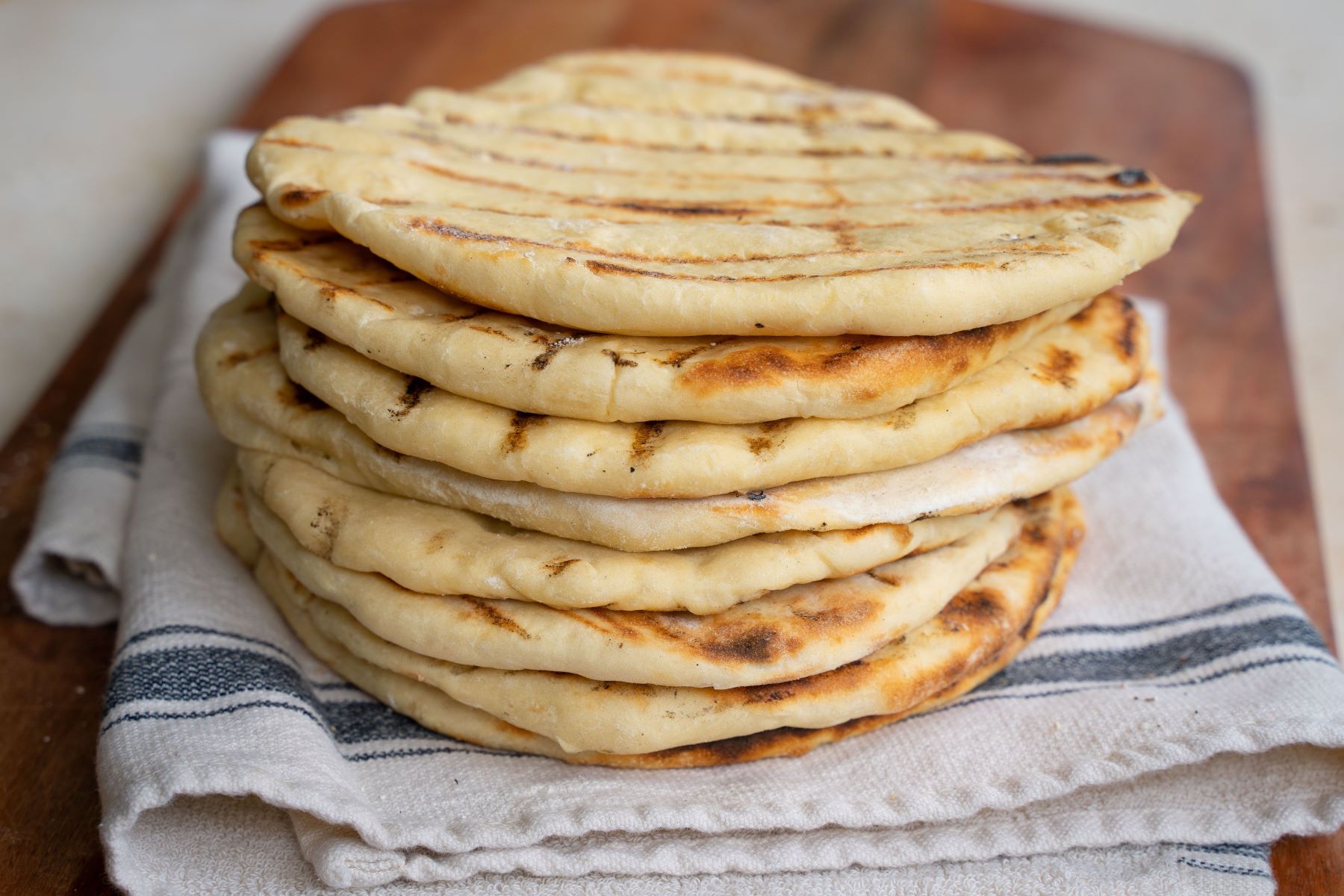
Pita bread is a versatile staple that has been enjoyed for centuries across various cultures. This flat, round bread is known for its unique pocket-like structure, making it perfect for filling with a wide variety of ingredients. But aside from its delicious taste and ability to hold a filling, did you know that pita bread also holds some surprising nutrition facts?
In this article, we will explore 18 nutrition facts about pita bread to help you understand its health benefits and make informed choices when incorporating it into your diet. From its high fiber content to its rich source of essential vitamins and minerals, pita bread is more than just a tasty carb. So, whether you’re a fan of the traditional Middle Eastern cuisine or simply looking for a healthier alternative to regular bread, let’s dive into the world of pita bread nutrition!
Key Takeaways:
- Pita bread is a versatile, low-calorie option packed with fiber, vitamins, and minerals. It’s perfect for sandwiches, wraps, and Mediterranean-inspired dishes, making it a healthier choice for your meals.
- Whether you’re a vegan, vegetarian, or just looking for a healthier bread option, pita bread is a cholesterol-free, protein-packed choice that can be enjoyed with a variety of dips and spreads. It’s a tasty and convenient alternative to traditional bread.
Pita bread is a versatile type of bread.
Pita bread is a unique and versatile bread that originated in the Mediterranean region. It is widely used in various cuisines around the world, including Middle Eastern, Greek, and Mediterranean dishes.
Pita bread is low in calories.
For individuals watching their caloric intake, pita bread is a good option. On average, one whole wheat pita bread contains approximately 165 calories, making it a relatively low-calorie bread choice compared to other types of bread.
Pita bread is a good source of carbohydrates.
Pita bread is primarily composed of carbohydrates, which are an essential source of energy for the body. It provides a quick and convenient way to refuel after physical activity.
Pita bread is low in fat.
If you are following a low-fat diet, pita bread can be a suitable option. The fat content in pita bread is generally low, especially when compared to other types of bread like bagels or croissants.
Pita bread is a good source of fiber.
One of the benefits of consuming pita bread is its relatively high fiber content. Fiber is essential for proper digestion and can help regulate blood sugar levels and maintain a healthy weight.
Pita bread contains essential vitamins and minerals.
Pita bread is rich in various essential vitamins and minerals. It contains B vitamins, including thiamin, niacin, and folate, as well as minerals like iron and magnesium.
Pita bread is a moderate source of protein.
While not as protein-rich as some other types of bread, pita bread still provides a moderate amount of protein. It can be paired with protein-rich fillings like grilled chicken or hummus for a balanced meal.
Pita bread is cholesterol-free.
For individuals concerned about their cholesterol levels, pita bread is a suitable choice as it does not contain any cholesterol.
Pita bread is a good option for vegans and vegetarians.
Since pita bread does not contain any animal products, it is an excellent choice for those following a vegan or vegetarian diet.
Pita bread is a convenient option for sandwiches and wraps.
The unique pocket shape of pita bread makes it a popular choice for sandwiches and wraps. It can hold a variety of fillings and sauces, making it a versatile option for meal preparation.
Pita bread is commonly used in traditional Greek dishes.
Pita bread plays a significant role in Greek cuisine, where it is used in traditional dishes like souvlaki, gyros, and tzatziki.
Pita bread can be toasted or grilled.
Pita bread can be enjoyed toasted or grilled, enhancing its flavor and texture. Toasted pita bread can be used as a cracker-like base for dips and spreads, while grilled pita bread adds a smoky flavor to sandwiches and wraps.
Pita bread can be homemade.
If you’re feeling adventurous in the kitchen, you can try making your own pita bread. There are many recipes available online that guide you through the process of creating fresh, homemade pita bread.
Pita bread can be used in various Mediterranean-inspired recipes.
Pita bread is a staple ingredient in countless Mediterranean-inspired recipes. It can be used to make Greek-style pizza, stuffed with falafel, or even transformed into delicious pita chips for snacking.
Pita bread can be enjoyed with a variety of dips and spreads.
Pita bread pairs well with a wide range of dips and spreads, such as hummus, tzatziki, baba ganoush, or even guacamole. It provides the perfect vehicle for scooping up these flavorful accompaniments.
Pita bread is commonly used in Middle Eastern street food.
Pita bread plays a central role in Middle Eastern street food, such as shawarma and falafel wraps. Its versatility and ability to hold a variety of fillings make it a popular choice in these dishes.
Pita bread is available in various flavors.
Pita bread is not limited to plain or whole wheat varieties. It can also be found in flavors like garlic, olive, or even sun-dried tomato, adding an extra dimension of taste to your meals.
Pita bread can be a healthier alternative to other bread options.
When compared to bread options like white bread or bagels, pita bread often provides a healthier alternative due to its lower calorie and fat content. It can be a mindful choice for individuals looking to make healthier dietary choices.
Conclusion
In conclusion, pita bread is a versatile and delicious food that can be enjoyed in various ways. It provides a range of essential nutrients, including carbohydrates, fiber, protein, and vitamins. Pita bread is also a healthier alternative to regular bread due to its lower calorie and fat content. Whether you enjoy it as a sandwich, a dipper for hummus, or a base for pizza, pita bread can be incorporated into a balanced diet. Its unique texture and flavor make it a popular choice for many cuisines around the world. So, next time you’re looking for a nutritious and tasty option, consider adding pita bread to your meal.
FAQs
1. Is pita bread gluten-free?
No, pita bread is typically made from wheat flour and contains gluten. However, there are gluten-free options available that are made from alternative flours, such as rice or quinoa.
2. How many calories are in a serving of pita bread?
The number of calories in pita bread can vary depending on its size and brand. On average, a regular-sized pita bread contains around 165-170 calories.
3. Can pita bread help with weight loss?
Pita bread can be a part of a balanced weight loss diet due to its lower calorie content compared to regular bread. It can provide a satisfying and filling option, especially when paired with lean proteins and vegetables.
4. Does pita bread have any nutritional benefits?
Yes, pita bread offers several nutritional benefits. It is a good source of dietary fiber, which helps in digestion and promotes satiety. Pita bread also contains various essential nutrients, including vitamins B and E, and minerals like iron and potassium.
5. Can I freeze pita bread?
Yes, pita bread can be frozen to extend its shelf life. Make sure to store it in an airtight container or zip-lock bag to prevent freezer burn. When ready to use, thaw it at room temperature or lightly toast it before consuming.
Was this page helpful?
Our commitment to delivering trustworthy and engaging content is at the heart of what we do. Each fact on our site is contributed by real users like you, bringing a wealth of diverse insights and information. To ensure the highest standards of accuracy and reliability, our dedicated editors meticulously review each submission. This process guarantees that the facts we share are not only fascinating but also credible. Trust in our commitment to quality and authenticity as you explore and learn with us.


